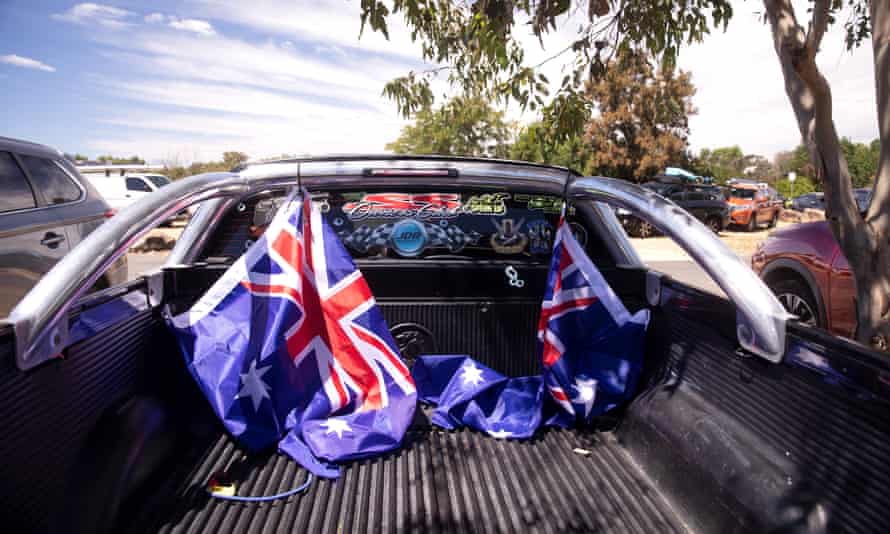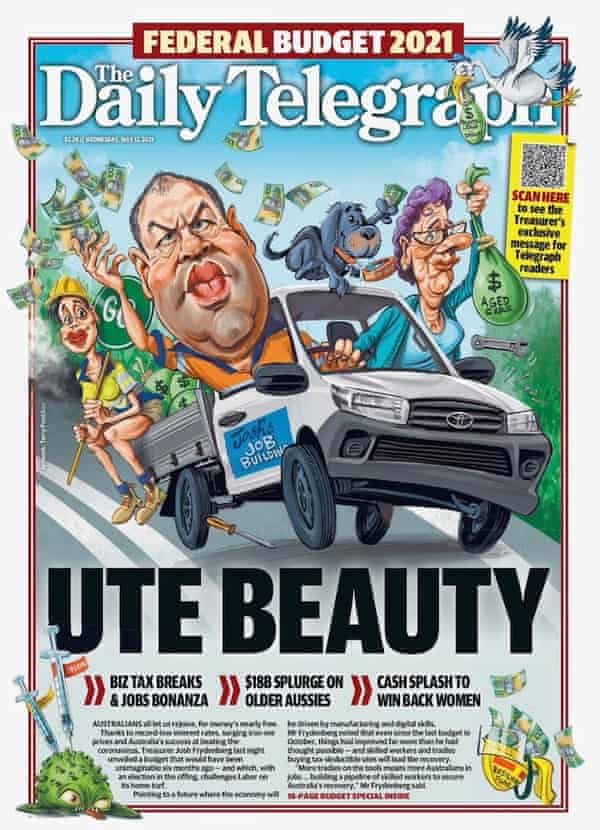Extract from The Guardian
While most of the world offers incentives to people buying EVs, our government hands out subsidies for utes.

‘Australia ... has been offering big tax breaks and preferential parking for big utes, and guess what? It has worked.’
Last modified on Wed 26 May 2021 16.37 AEST
As a rule of thumb, it’s good economics and good politics to tax the things you want less of and subsidise the things you want more of. That is why the Australian government raises so much tax from alcohol and tobacco, and why the Victorian government’s electric vehicle tax is the dumbest idea since Tony Abbott made the Queen’s husband a knight.
But it’s not just the Victorian government that’s waging an unwinnable war against new technology. While most of the world is offering financial subsidies and incentives such as free parking to people who buy electric cars, the Morrison government is spending billions of dollars on subsidies for the enormous twin cab utes that now dominate Australian car sales while our local councils offer free and convenient parking for the same behemoths.
At the same time Scott Morrison is saying that Australia is “leading the world” in the transition away from fossil fuels, all of the top 10 company cars in Australia are twin cab utes or so-called “sports utility vehicles”, and Australia’s emissions from transport are, unsurprisingly, trending up, not down. Thank god for accounting tricks.
It’s no accident that inefficient and emission-intensive twin cab utes are taking over Australia’s streets. It’s the direct result of our tax system, our planning system and the way that governments use policy to send signals to voters rather than solve substantive issues. Let’s start with the tax system.
Forget the “women’s budget”, one of the big announcements in the latest budget was the $17bn extension of the “instant asset write off”. “UTE BEAUTY” screamed the Daily Telegraph front page the day after the budget. While few Australians understand the new instant asset write off provisions in our tax system, I assure you, car salespeople do.

The Daily Telegraph’s front page on Wednesday 12 May 2021. Photograph: Daily Telegraph
If you own a small business, be it as a plumber or a graphic designer, and you want to buy an enormous twin cab ute, you can deduct the entire cost of that vehicle, up to $150,000, against your income from that year in order to calculate your taxable income. If you earned $100,000 per year from your graphic design business and bought a $150,000 ute, then for tax purposes your income (loss) would be -$50,000, so you wouldn’t have to pay any income tax at all. Importantly, the $150,000 cap only applies to “commercial vehicles”, which means while you can drop off a USB drive to your customer at a cafe in a subsidised 2.5 tonne diesel ute, you can’t get the same tax breaks for a Tesla.
For most people, the twin cab ute solves tax and regulatory problems, not transport problems. The Australian tax rules treat vehicles that can carry more than one tonne of cargo quite differently than they treat other vehicles. But – to be clear – the vehicle doesn’t have to actually carry more than one tonne of cargo to get the tax breaks or the free parking, it just needs to have the capacity.
Which brings me to the politics. While many mock the absurdity of the prime minister’s pre-election comments about utes, electric vehicles and the ruination of the weekend, few see the political genius at play. In an era where a lot of people never watch the news, let alone analyse policy, the PM wanted an easy way to signal that he was on the side of people who own utes, not the people who drive EVs, for the simple reason that a lot more swinging voters drive the former. Not only did it work, but his strategy both anticipated (and required) the outrage of progressives. Mission accomplished.
Countries like Norway have been offering financial subsidies and incentives like preferential parking to electric vehicles for years and, in turn, they now have more electric vehicles on the road than they do petrol and diesel powered cars. Australia, on the other hand, has been offering big tax breaks and preferential parking for big utes, and guess what? It has worked. The average weight of the Australian car fleet is rising, which inevitably means Australia’s transport emissions are as well.
The Victorian government argues that it has to impose a new tax on electric vehicles because drivers of those vehicles don’t pay fuel excise, which makes about as much sense as taxing nicotine patches on the basis that those giving up smoking aren’t paying tobacco excise any more. If Australia wants to actually transition away from fossil fuels we need to stop using so many fossil fuels. Subsidies for solar panels have helped us achieve that goal. Subsidies for giant utes have slowed our progress, and so too will taxes on electric vehicles. It’s not complicated.
No comments:
Post a Comment